Solar Orbiter science
The Solar Orbiter mission addresses the central question of heliophysics: How our nearby star generates and perturbs the heliosphere?
The hot solar atmosphere is continuously expanding in form of a solar wind blowing at several hundred kilometers per second, which sweeps the planets and permeates the entire heliosphere, whose limits have been recently crossed by the Voyager fleet.
The solar wind is perturbed by violent solar explosions and huge eruptions driven by the solar magnetic activity that is controlled by a dynamo rooted below the solar surface.
Solar Orbiter is designed to optimize the investigation of the link between the Sun and the interplanetary medium with complementary remote sensing and in situ instrumentation, by addressing the following scientific questions:
- How does the magnetic field create the hot solar and active corona?
- How does the corona in turn create and perturb the heliosphere?
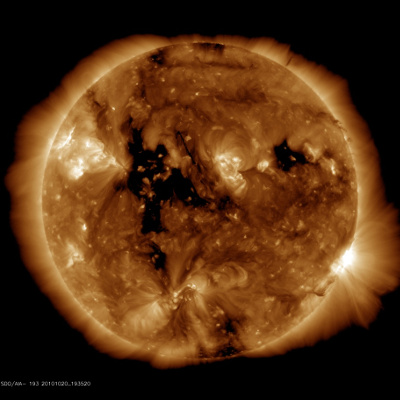
The solar corona shaped by the magnetic field (SDO/AIA 193 Å image acquired on 20/10/2010)
More specifically, with Solar Orbiter the scientific community intends to address the following crucial scientific questions:
- How does the solar dynamo work and drive connections between the Sun and the heliosphere?
- How and where do the solar wind plasma and magnetic field originate in the corona?
- How do solar flares and eruptions drive heliospheric variability?
- How do solar flares and eruptions produce energetic particle radiation that fills the heliosphere?
Close to the Sun
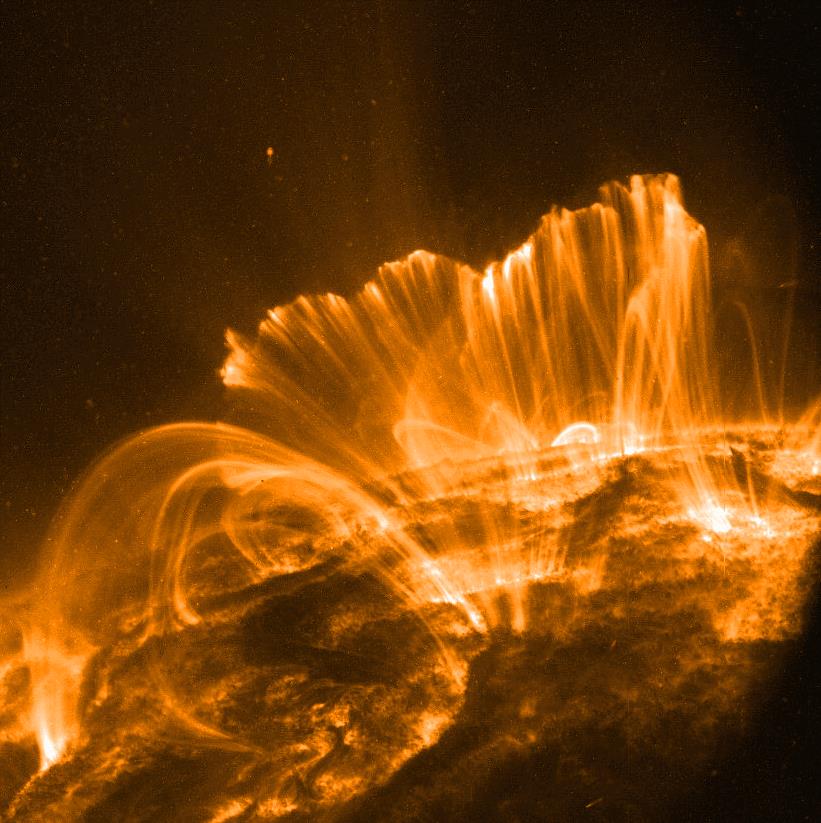
Coronal loop arcade observed with TRACE
The requirement to go close to the Sun is dictated by the need to observe:
- the processes heating the corona on a spatial scale below the resolution of the present telescopes in Earth orbit or located at the Lagrangian point L1;
- the pristine unprocessed solar plasma injected into the heliosphere that close to the Sun have not yet been washed out by plasma interactions in their propagation outward.
Over the polar regions
The requirement to observe the polar regions is dictated by the need to:
- explore the interior of the Sun also at the poles in order to understand the solar dynamo, that generates the magnetic field. The solar dynamo operates below the star surface, in the depths of the convection zone where an oscillating magnetic field is maintained by plasma motions. The polar convection zone has not yet been probed via helio-seismology, since the solar poles cannot be studied from the ecliptic plane for simple geometrical reasons;
- observe the in 3D structure of coronal mass ejections (CME) due to solar eruptions, by accessing to the longitudinal structure of the corona when observing out of the ecliptic. Out of ecliptic observations are crucial to detect the propagation of the CMEs directed toward the Earth and assess their geo-effectiveness. CMEs do impact with the Earth magnetosphere at speed often above 1000 km s-1;
- detect the fast solar wind, blowing at 800 km s-1, when it emerges from the solar poles.
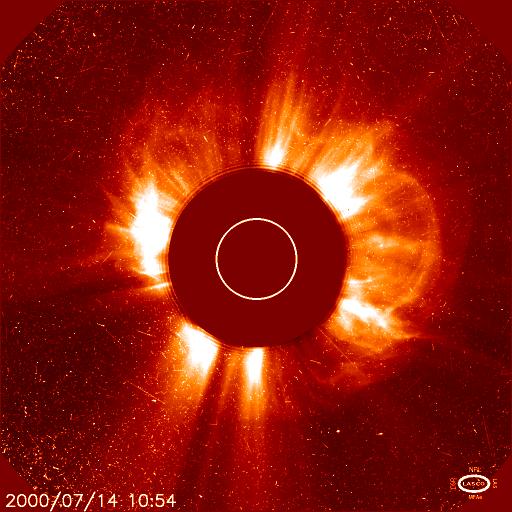
A coronal mass ejection directed toward Earth detected by the LASCO C2 coronagraph onboard SOHO
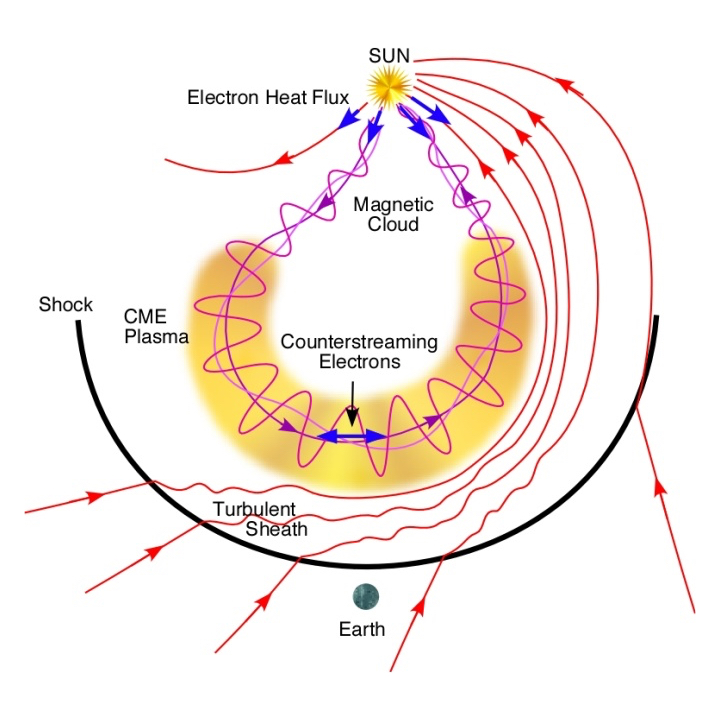
Sketch of the propagation of the magnetized bubble of hot plasma which forms the coronal mass ejection as seen by a coronagraph out of the ecliptic, aboard Solar Orbiter
Co-rotating with the Sun
The requirement to quasi co-rotate with the Sun, when at perihelion, is in order to:
- slow down the passage of the solar corona at the limb, thus allowing to understand the magnetic field evolution prior to coronal mass ejections and the identification of the physical process originating the large disruption of the solar atmosphere during such events;
- maintain the magnetic link of the heliospheric plasma to the source on the solar surface, thus allowing to follow the intrinsic evolution of the plasma, separating it by the solar rotation effects, in order to link the plasma parameters to the evolution of the solar source.
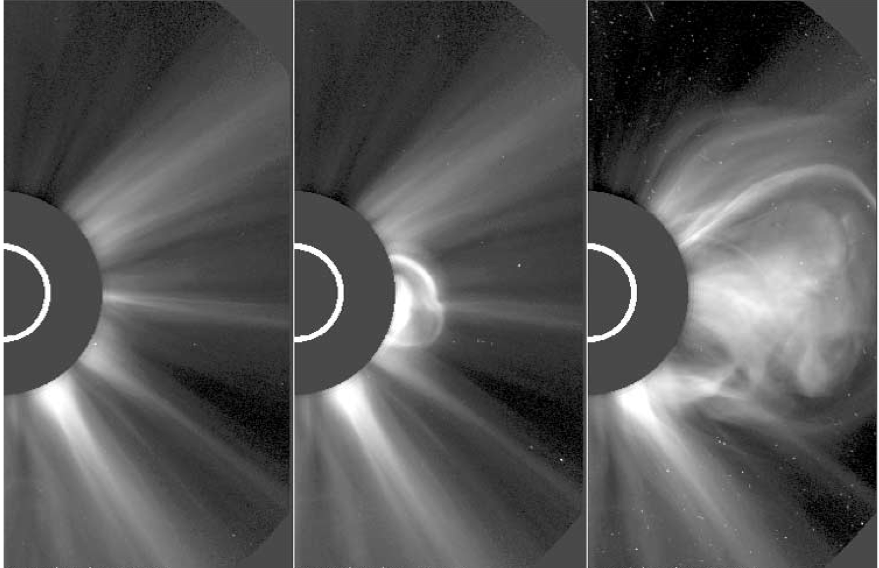
Evolution of the solar corona at the limb as observed by the LASCO C 2 coronagraph onboard SOHO